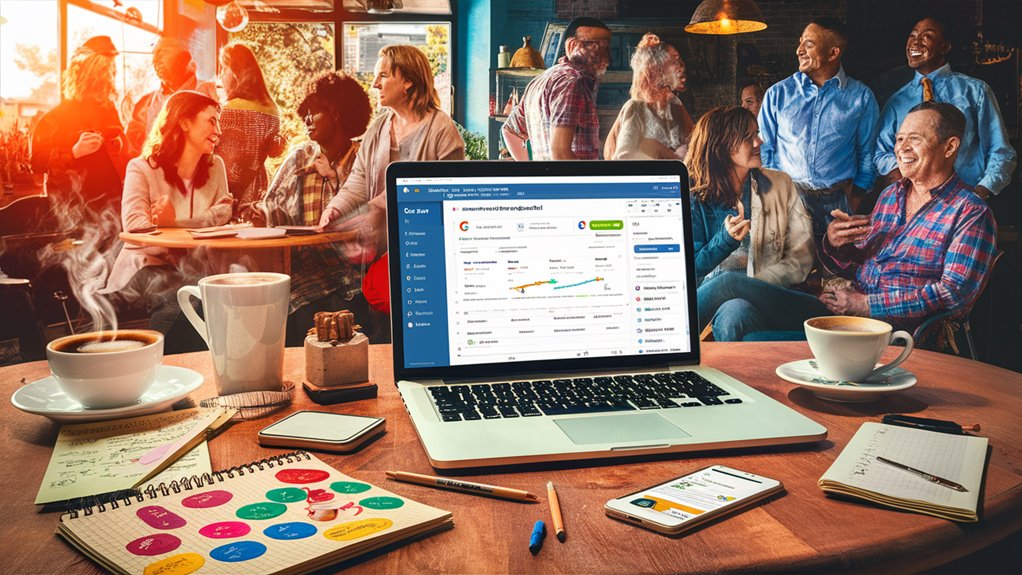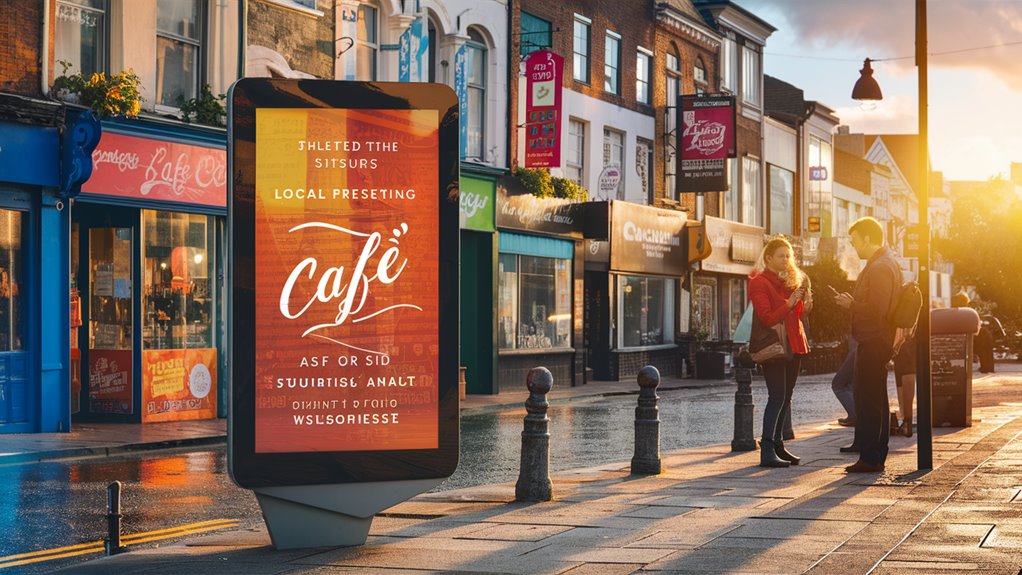How to Integrate Local SEO With Paid Ads for Better ROI
Looking to maximise your ROI? Ever thought of combining paid ads with your local SEO efforts?
Aligning your keywords across both platforms can give your visibility a nice boost. Yes, by using location targeting in Google Ads and ensuring your NAP information is consistent across the web, you lay a solid foundation for trust.
But, there are actually more techniques you can implement to improve user experience, and drive more conversions. What if you could access even greater potential by exploring some lesser-known strategies?
Sound good? Lets get started
Understanding Local SEO Benefits
Understanding the benefits of local SEO can improve your business’s visibility and customer engagement. With local searches making up 46% of all Google inquiries, a solid local SEO strategy helps you connect with nearby customers who are ready to buy.
The high intent behind these searches often leads to higher conversion rates, allowing you to attract organic traffic without relying solely on paid advertising.
Having an optimized Google Business Profile is a must. Businesses with a well optimized profile see 42% more direction requests, meaning more foot traffic to your location.
To boost your online visibility, focus on using relevant keywords that local customers are searching for. This can greatly increase your organic search rankings and credibility.
Remember that 84% of people trust online reviews just as much as personal recommendations, these reviews can directly impact your local search rankings. More so, positive reviews can boost customer spending by 31%, further boosting your local SEO efforts.
Aligning Paid Ads With Local SEO
By using local keywords in both your ad copy and website content, you create a seamless experience that improves relevance and visibility in search results. This connection helps potential customers find you more easily.
Using Google Ads location targeting alongside an optimized Google Business Profile can really improve your chances of appearing in local searches and ads. This strategy drives higher foot traffic to your physical location.
Implementing ad extensions, like location extensions in Google Ads, reinforces your local SEO efforts by providing valuable business information directly to potential customers. This boosts engagement and visibility.
Regularly monitoring performance metrics from both your paid ads and local SEO can reveal insights that allow you to adjust your strategies.
By understanding what resonates with local audiences, you can continuously optimize your online presence for better results. Also, leveraging local business listings can further help your visibility and credibility in the community.
Optimization Techniques for Local Campaigns

Optimizing local campaigns means leveraging targeted strategies that resonate with your community. Start by introducing local keyword strategies in both your paid ads and SEO content. Since 46% of all Google searches seek local information, using specific local terms can improve your search visibility and help you connect with local customers effectively.
Don’t overlook the power of Google My Business. By optimizing your profile, you can increase local customer engagement. Businesses with complete profiles often see 42% more direction requests.
Also consider including ad extensions like location and call extensions in your Google Ads. These can boost click-through rates by providing immediate access to essential business information.
Regularly updating your Google Business Profile with promotions and events creates a cohesive message across your paid and organic strategies. This connection can lead to better conversion rates. Place localized keywords in your menu descriptions which can further support your visibility and attract more local customers.
One last thing, use analytics tools to monitor and adjust your local ad performance and keyword effectiveness. This ongoing optimization allows you to allocate your budget wisely, ensuring higher ROI.
Improve User Experience for Ads
To improve user experience for your ads, focus on creating mobile-friendly landing pages. These pages are essential because they boost user experience and can lead to higher Quality Scores. A better Quality Score may reduce your cost-per-click (CPC) by up to 20%.
Confirm your ad messaging aligns with your landing page content, as studies show that a cohesive user journey can increase conversion rates by 30%. Communicating clear value propositions on your landing pages directly addresses your audience’s pain points. This approach can lead to a 15% increase in click-through rates (CTR) for your ads.
Don’t forget about mobile responsiveness; many users search on their phones, and an optimized landing page can improve visibility in search results. Implementing structured data markup can further improve visibility and potentially increase organic traffic by 20%, which complements your paid ads. You should also make sure that your content is optimized for local searches, as this can really help your visibility in voice search results.
Ultimately, consider A/B testing different landing page designs and calls-to-action (CTAs). Effective testing strategies can lead to a 25% increase in conversions, making your advertising strategies even more effective in driving results.
Building Trust Through Reviews

Creating a seamless user experience is just the starting point in your advertising strategy; building trust through reviews is equally important.
Positive online reviews can greatly boost your local SEO and paid advertising efforts. In fact, they can increase click-through rates by up to 47%.
With 84% of consumers trusting online reviews as much as personal recommendations, having a higher volume of reviews can help you rank better in local search results.
Engaging with your customers by responding to reviews, whether they’re positive or negative, shows that you care. This engagement can improve brand perception, which often leads to better ad performance and ROI.
Including customer testimonials and star ratings into your paid ads can also strengthen your credibility, increasing conversion rates by 10% to 15%.
Encouraging customers to leave reviews after they make a purchase can boost both the quantity and quality of feedback you receive.
This feedback directly impacts your local SEO rankings and the success of your paid advertising campaigns.
Remember, mapping out some online reputation management strategies can further boost your brand’s visibility and trustworthiness in the eyes of potential customers.
Future Trends in Local Marketing
As local marketing evolves, staying ahead of emerging trends is imperative for businesses looking to thrive in a competitive landscape.
One major trend is the rise of voice search. By 2025, it’s expected that 50% of all searches will be voice-based, which means you’ll need to optimize for conversational keywords and phrases to capture local traffic effectively.
Mobile optimization also plays a key role, as studies show that 76% of people searching for nearby businesses visit them within a day. A mobile-friendly website is essential to your success.
Artificial intelligence is changing the game, helping you analyze consumer behavior, predict trends, and personalize paid advertising campaigns.
This leads to more effective targeting that resonates with local audiences. Also, AI-driven keyword research propels local search rankings, allowing for more precise targeting in your paid ad campaigns.
Also note, augmented reality is gaining rapid popularity; 61% of consumers prefer shopping at stores that offer AR experiences. This can greatly improve customer engagement.
Lastly, don’t underestimate the power of social media advertising. With 78% of consumers influenced by brand posts, integrating social ads into your digital marketing strategies is a must.
Conclusion
There you have it. By integrating local SEO with paid ads, you can markedly improve your return on investment. Focus on using local keywords in both strategies and guarantee your ads reach nearby customers.
Keep your business information consistent and use ad extensions to provide helpful details. Regularly monitor your performance and test different landing pages to strengthen user experience.
Following these steps will not only boost visibility but also build trust and lead to higher conversion rates.

